Oktoberfest 2019

With autumn almost here and the holiday season not far behind, New York City often lands on the travel plans of explorers. While there’s plenty to see on the streets of the city, below the streets mosaic, terra cotta, bronze, glass, and mixed-media sculptures await. For the price of a Metro Card, you’ll find a subterranean art museum in the New York City subway stations.
From its beginning over 100 years ago, the New York City subway system was never intended to be a faceless labyrinth of concrete and steel. Designers sought to soften its rather rough edges with works of art and ornamentation. It’s all still there and thanks to the MTA’s Arts in Transit program the early artwork has been restored and joined by new additions. More than 300 works from artists have been commissioned by the agency since its opening in the 1980s, including these urban masterpieces.
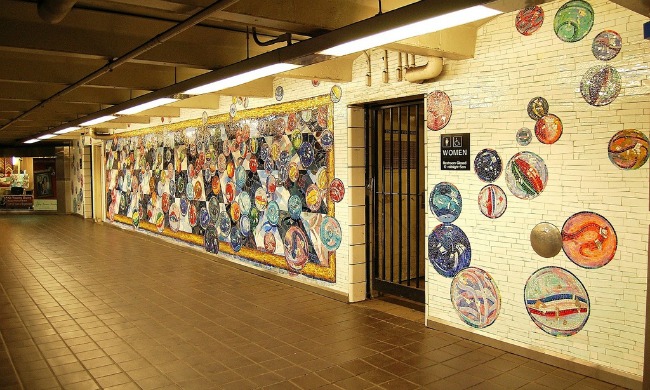
In the subway’s earliest days, William Barclay Parsons and Heins & LaFarge established a two-prong philosophy to ornament the subway stations: adorn the subway platforms with beautiful ceramics that provide straphangers with an easy way to identify the station locations. Some identifications are obvious with ornamented station numbers. In Times Square you’ll find the station’s name spelled out in white letter tiles on a blue-tiled background surrounded by a decorative border of mosaic garlands and topped with beaux-arts classical details.
Other stations tell the history of the neighborhood. Ceramic beavers symbolic of the Astor’s fur trade adorn the walls at Astor Place station. At Fulton Street station Robert Fulton’s steamer paddles up the Hudson past green shores under a blue sky. And at Wall Street, you’ll find a Dutch colonial house protected by the old wooden stockade from which the street got its name.
Over time the style evolved from the beaux-arts designs of elaborate curves and flowers to the flat and rectangular designs of the Arts and Crafts movement. Station names are spelled out in white tiles on colored backgrounds framed by brightly colored rectangular, square or diamond-shaped individual tiles.
At the 135th Street station of the 2 and 3 subway line, the walls are covered with a “Harlem Timeline.” On the downtown platform, a glass mosaic by Willie Birch pays tribute to Harlem greats like Charlie Parker, the Reverend Adam Clayton Powell Jr., and Langston Hughes. On the north platform, Billie Holiday is displayed in a vibrant mosaic. Folk art, African American quilts and textile designs from Africa and Mexico are all incorporated into the artwork.

At the 14th Street station on 8th Avenue, Tom Otterness’ mischievous cast-bronze characters rise from beneath the platform floor and scamper along the ceilings and staircases. Here the urban myth of alligators under the city comes to life as one snatches hold of the pants of a runaway character. Inspired by 19th-century political cartoonist Thomas Nast, Otterness portrays politicians with moneybags for heads. The messages are pretty clear on some like the depiction of a worker woman reading a book on top of a possibly dead businessman lying on a pile of money and a large man in a suit and top hat wrestling away coins from a tiny figure adorned in a dress. On the staircase, a moneybag head shines bright from people giving him a rub for good luck on the way to and from work.
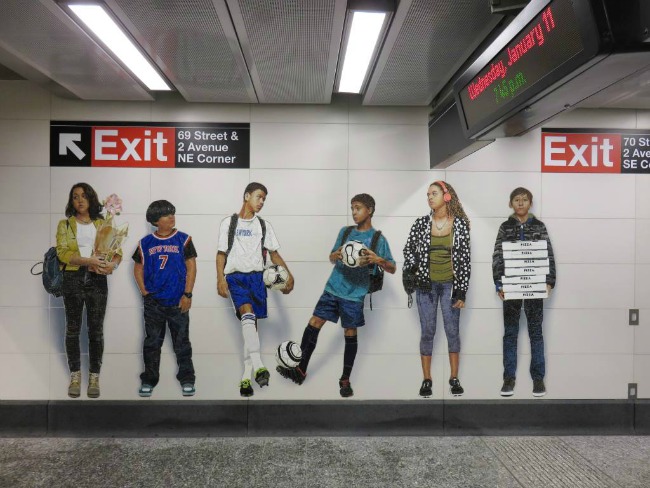
When the Second Avenue Subway stations opened on New York’s Upper East Side in early 2017, the city gained more than a long-awaited transportation stop. The station has the largest permanent public art installation in New York state history with large-scale works by notable artists.
At Second Avenue, the entire subway station is an immersive art experience. Artist Chuck Close’s installation, “Subway Portraits” features 12 large-scale works nearly nine feet high portraying cultural figures including Philip Glass, Alex Katz, Cindy Sherman and Cecily Brown. His goal was to create mosaics upstairs that reflect the subway riders below.
Sarah Sze created an abstract project entitled “Blueprint for a Landscape” which features everyday city objects—scaffolding, birds, paper scraps. The items are tossed together on blue and white porcelain wall tiles. The artwork includes references to energy fields and wind patterns and spans about 14,000 feet.
The Vik Muniz “Perfect Strangers” installation at the 72nd Street stop focuses on the diversity of New Yorkers who live and work near the station. From blue-collar workers to professional businessmen to children, over three dozen human-scale portraits line the station’s platform.
Next time you’re in New York, linger for a bit in the subway stations and see what you discover.

Palm Health Foundation’s B.J. & Paula Harris Fund to Help Rebuild
Children’s Development Center in Belle Glade, FL
Contribution to support First Haitian Baptist Church as they replace
dilapidated 1940s children’s center beyond repair.
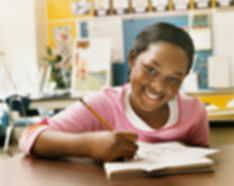
West Palm Beach, FL– August 29, 2019— The B.J. & Paula Harris Fund at Palm Health Foundation has made a $10,000 gift to The Sovereign Order of St. John of Jerusalem Knights Hospitaller, Commandery of the Palm Beaches (SOSJ) to support the First Haitian Baptist Church of Belle Glade’s Youth and Children’s Development Center. The gift will be used to support the construction of a new 5,000 sq. ft. multi-purpose facility for the children of Belle Glade replacing the current building, a 1940s house that is beyond repair and too small to meet the needs of the community.
The SOSJ has made a three-year commitment to raise the funds needed to build the new children’s development center. The B.J. & Paula Harris Fund gift will help the new center meet its $500,000 goal and expand to meet the growing needs of the 120+ children who attend the center for after-school care. Educational programs including reading, math, science and social studies are offered in English and Creole as many of the children and young teens attending are from Haiti and need bi-lingual support to help them excel at school. The center will also offer supportive nutrition and mentoring for the children. With the new, expanded facility, the center hopes to become a true community hub for all ages, offering senior programming, cultural activities and space for a nursery and children’s area when church services are held.
“We know that the social determinants of health—conditions in the places where people live, learn, work, and play—can affect health and long-term outcomes,” said Patrick McNamara, CEO of Palm Health Foundation. “The B.J. & Paula Harris Fund gift will help provide children with a safe, productive environment where they can experience the joy of learning, have a healthy meal and get exercise through play, contributing to a healthy youth and establishing life-long healthy practices.”
The B.J. and Paula Harris Fund honors the memory of B.J. Harris who whole-heartedly believed in giving back to the community where he lived. His deep commitment to community coupled with a keen interest in health improvement compelled him to establish the donor advised fund at Palm Health Foundation.
For more information about establishing a fund at Palm Health Foundation, please visit www.palmhealthfoundation.org. To learn more about the SOSJ and First Haitian Baptist Church of Belle Glade’s Youth and Children’s Development Center please visit https://www.sosjpb.org/belle-glade-project.
About Palm Health Foundation Palm Health Foundation is Palm Beach County’s community foundation for health. With the support of donors and a focus on results, the foundation builds strong community partnerships, respects diverse opinions, advocates for its most vulnerable neighbors and inspires innovative solutions to lead change for better health now and for generations to come. The foundation supports health equity for Palm Beach County residents of all backgrounds, heritage, education, incomes and states of well-being. Palm Health Foundation has invested more than $80 million in Palm Beach County health since 2001. For more information about Palm Health Foundation, visit palmhealthfoundation.org or call (561) 833-6333.
September, 2019 – Hurricane Dorian, Go Away!
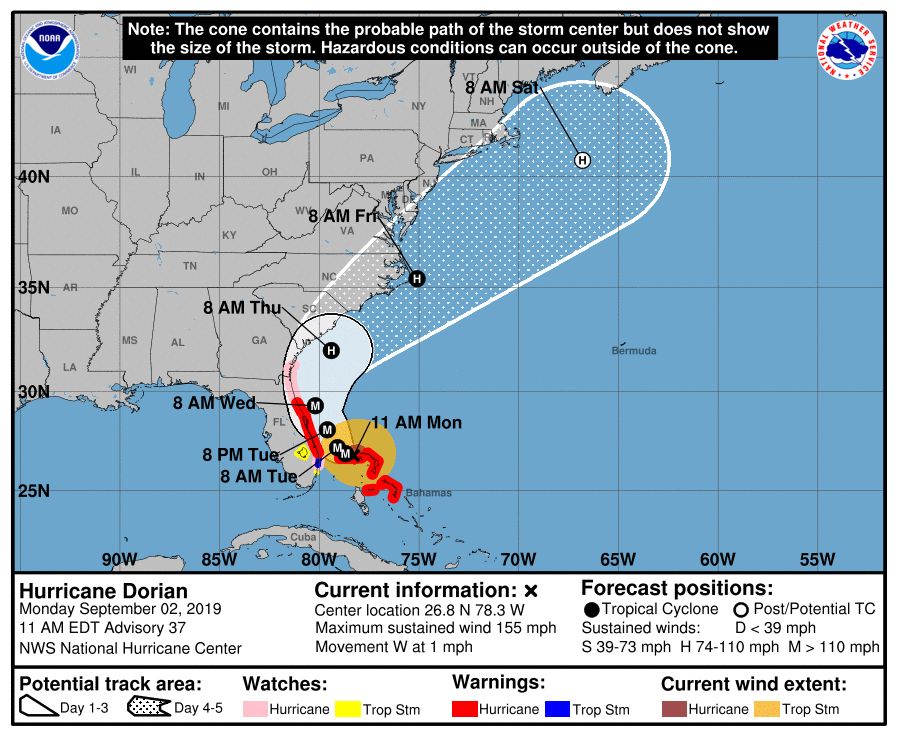
As I write this month’s Letter from the Editor, it’s Labor Day and Hurricane Dorian is approaching, slowly at one mile per hour. It’s already caused devastation and permanent change to the Bahamas. It could hit as a tropical storm. Or it could take a turn and hit as a Category 4 hurricane. I hope you all are prepared, shuttered up and able to stay safe.
I feel that my family is ready – with shutters up, ice in the coolers and a generator ready to go. One thing I remember from 2004 is that if we lose power for 5-7 days, it can be miserable. With that said, I really feel for our friends in Puerto Rica, some of them who were without power for over a year.
Well, onto this month’s articles. There’s only one article that we ever repeat and that’s Wendell Abern’s “To All the Grandchildren in the World” letter, reflecting on the events of 9/11. It’s a beautiful letter, one that you must read.
Our “AW Spotlight” story is about Total Shredding, LLC. This is a great service, an on-site shredding business that helps many small businesses in our community. They also contribute to many fundraiser events in our area. Read my interview with owner Monica Lewis.
Are you possibly burnt out from too much “screen time,” as Lori Baumel suggests in this month’s Cultural Corner article “Cultural Reset?” Check out her, as always, excellent tips for Live, Go, Do!
And don’t let your plans to exercise get derailed. In “Health & Fitness,” Lynda Linforth gives some great, practical tips on how to set your agenda and Carpe Diem.
Speaking of derailed, I’m in a band called D-Railed. I play the keyboards and sing back-up vocals. Come out and see us play sometime – we usually play at Village Music & Café in Wellington. I’ll keep you posted on our next date.
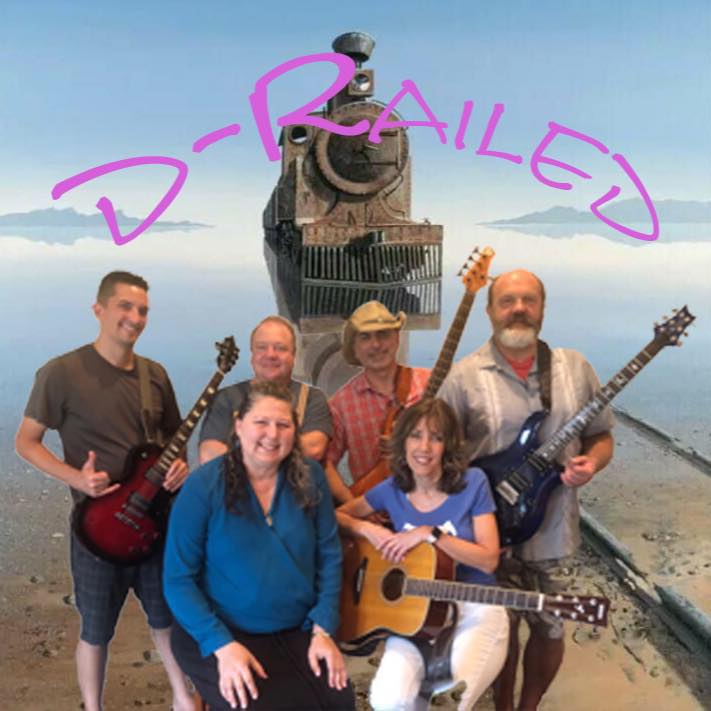
In “Paws-itive Press,” Barbara Masi gives some helpful advice for how to keep things safe between children and dogs.
We’re excited to introduce a new poet to AroundWellington this month, Denise Marsh. She is an elementary school teacher and writes a poem for her classroom. See “Poem of the Month.”
As always, there are many more articles to explore. So, act now while you still have power and enjoy the new material from our team at AroundWellington.com. Stay safe during the storm, everyone!
Happy September,
Krista
AroundWellington.com
Editor
Back to School Thoughts
By Melanie Lewis
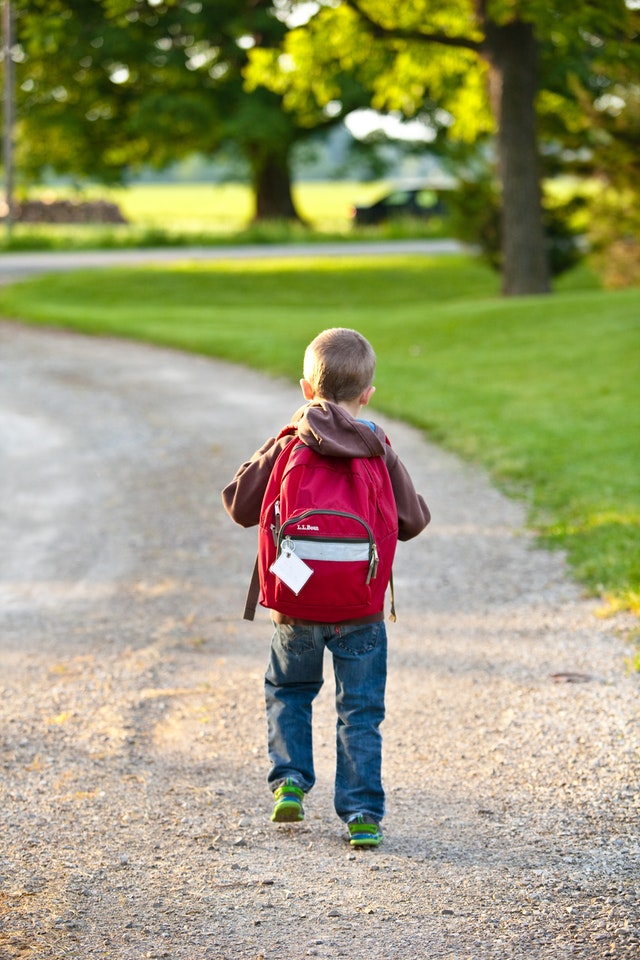
This is the time of year school traditionally starts. For some, school is year-round. For some it’s another packet to start at home. For some in far-flung impoverished areas, it’s not happening at all. In light of the extreme fortune to have dedicated professionals interact, teach and guide students, I’m extremely grateful!
School is not only a place for facts and figures, but to: gain healthy habits, organization skills, fond memories, basis for future interests and career, and explore. It’s a time to try things; be in a school play, investigate if you’re a budding chemist, giggle doing a rousing game of mosquito tag. Games and socializing are some of the most important lessons. It’s probably one of the few times to have contact with other people face-to-face. Kids, text, chat and game without ever seeing the other person they are playing against.
I will not miss having my kids around. They are ready to trot off in the shiny new shoes labeled with their name and a smiley face. That’s my trademark. That’s because a little heart is way too gushy for boys. They need to feel this independence as well as learn the skills and habits that enable success. School is a cocoon for them to develop. Although, the world is encroaching more and more. There is one sure thing they can know, that we love them. Send them off with smiley faces and hearts.
To Carpe Diem – Break the Cycle
By Lynda Linforth
Your best intentions of getting up at the crack of dawn to exercise have been foiled again. As you lie there in the echo of your alarm, wondering why you are still exhausted, you give into the fatigue and reset your alarm for the latest possible time you can risk in order to not be late for work. Driving to work, you realize the extra hour and a half you allowed yourself to sleep not only did not decrease your fatigue but has added to your guilt about not exercising. You resolve to make up for it that evening, knowing full well your day is going to get away from you, you will arrive home later than usual, eat a convenient dinner and then promise yourself to wake up early. The cycle continues.
Cycles, like habits, are hard to break and take planning and purpose to re-calibrate. Consider the following to set yourself up for success:
Set your intentions
Why do you want to get in shape? Find a more compelling reason than “I want to wear my skinny jeans”, such as health, an event or the holiday season. The reason why has to be more important to you than sleeping in or eating the office birthday cake.
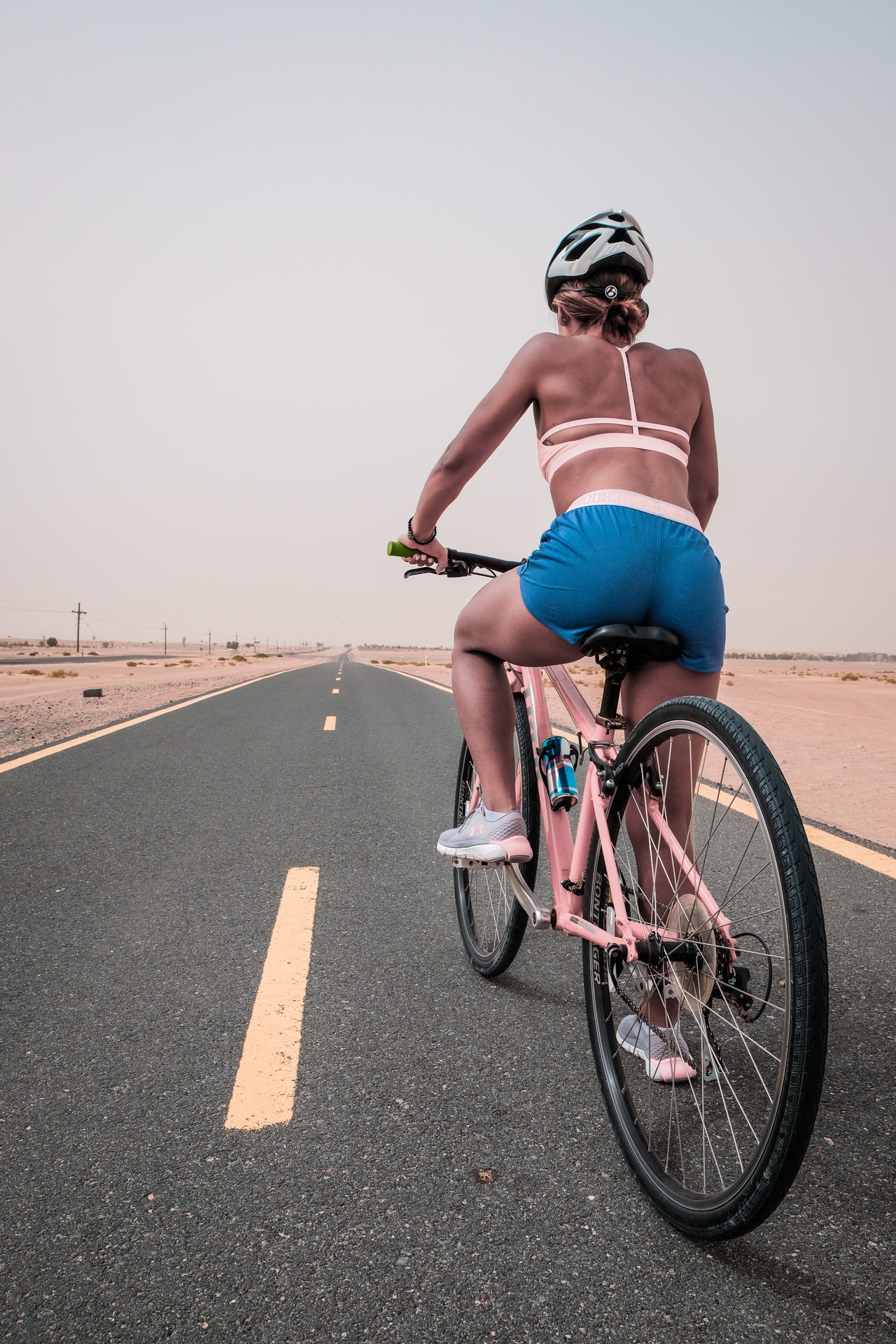
Get the best sleep
Surprisingly, one of the secrets to a great night’s sleep starts the morning before. In many scientific studies, including one overseen by Emma J Wams, DPhil (PhD), et al in 2017, some findings showed that people who were exposed to unfiltered, dawn light for 30 minutes per day, actually reset their circadian rhythms and prepared them for sleep at the end of the day.
Restrict caffeine and sugar consumption (including fruit) to the morning and early afternoon and eat an evening meal rich in protein and non-starchy vegetables.
Turn off all screens one hour before bed. Not only are we stimulated by the HEV (blue) lights emitted from our screens, the content can also cause us stress or distraction which can cause interrupted sleep.
Meditation, praying or stretching before bed helps to calm the mind and body. There are several apps which can provide guidance, but my favorite by far is Calm and 40 million down-loaders agree. Calm has workshops, nature sounds, guided meditation, breathing practices and much more. Want Matthew McConaughey to read you a bedtime story? Want to fall asleep listening to rain falling on leaves (LeBron James’ favorite)? Yep, Calm delivers. I invested in a sleep headset which is two little speakers sewn into a soft headband and my nightly routine was transformed. The headset also blocks out the nocturnal acrobatics of our pets, which is another common sleep disruption.
Accountability
Whether you enlist your partner, a friend or a personal trainer, one effective way to make a pre- dawn exercise appointment is to make sure someone is depending upon you to show up.
Be excited
Change your exercise routine frequently to avoid boredom and also to keep your body guessing. We have access to variety of fitness programs with monthly memberships. I suggest making a complete change every 90 days.
Stay convenient
Most people are unable to maintain consistency if the workout is more than 5 miles from their home or work place. I recently invested in a Peloton bike and I was surprised at how much I enjoy being part of the community. As an avid cyclist, my workouts are completely weather dependent. I bought a platform so I could ride my road bike inside and I hated it. I will often watch the lashing rain from my Peloton seat or look in the mirror at my outfit and hair and think “I could never look like this in the gym!”.
Consistency not perfection
Sickness, work or family dynamics can sometimes derail your best laid plans but do not let a missed workout throw off your day. Adjust and be flexible but most of all, just be consistent.
Carpe diem….et conteram exolvuntur
Seven Generations
By Bryan Haze
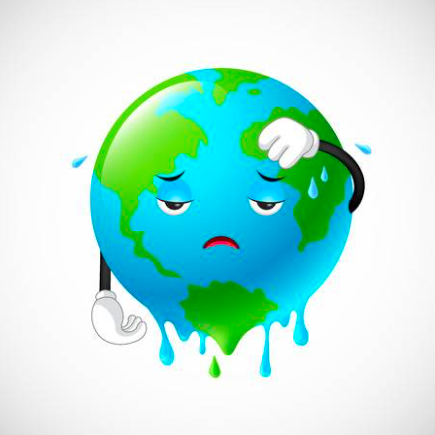
If we could gaze into the future of seven generations from now, how will they perceive our choices and thinking?
When we die will we leave this planet, our planet, a better place than we found it? As we see lives and species in peril, can we truly justify whether we are helping or harming the planet as a global society? Life does not live in a vacuum. Every action has an equal and opposite reaction, but there is such an emphasis today on living in the moment, to be present, and to focus on ourselves that maybe we tend to forget that we do not live only for this moment. Our actions affect our children, for example, but also their children, and so on and so on.
When I was in high school, a friend of mine and I were driving down a long rather deserted road in a midwestern rural area. We had just finished eating food from a fast food restaurant and had our paper bag sitting next to us. All of us a sudden, he grabs the bag and rolls down the window. I wonder what he is doing, but before I know it, he throws the bag out the window.
“Why did you do that?” I asked. “Why did you litter?”
His response was rather pragmatic. “I am giving the inmates (who come by and clean up the trash alongside the road) something to do,” he remarked.
Do you ever look back on previous decisions, previous generations even, and wonder what were they thinking? Hindsight is 20/20. It is easy to reflect, judge, and wonder why more people did not respond, act, or react, in a better more responsible way.
I can reflect back on my friend in disdain for throwing out our trash onto the road, but what about me? What could I have done differently? If I was so offended by his actions, why did not I, as the driver, simply turn around and go pick it up myself?
What are we doing today to either help, or hurt, ourselves in our planet not only today but for generations after us? What mess are we ourselves leaving? While it may be 20/20 in the distant future, we are often blind in the moment as we often are not logical in our decisions but instead are dictated by emotions.
My emotion with my friend was fear. I was more concerned about my friend’s reaction, and him not liking me, than I was of my opinion of myself and doing what I logically knew was the right thing to do.
What if we asked with every decision we make if we are helping, or we are hurting, not only with ourselves, but with our friends, family, and our environment, for generations to come? How would that change our decision making?
When speaking to my friend now, would he see things differently or would he do the same thing over again? Would I?
Would we, if we could? Or, do we continue doing as we always have?
In two rather parallel, yet separate conversations, one friend told me that it really does not matter if they recycle, reuse, or reduce, because he is only one person and it really does not matter anyway. The same was said by another friend who said basically the same thing about voting.
We are inching closer to national election day. It will be here before we know it. Some will say that they do not like either candidate, so what is the point? Others will say I really like this third party candidate, because they are the most aligned with my thinking. I saw yesterday someone posting that it is unrealistic to think that voting will make any difference.
The point is that voting dictates policy and legislation, which especially concerning the sustainability of the planet, are we either helping or we hurting? We can either be a part of the solution or a part of the problem, as the saying goes. It is natural to become despondent, frustrated, but when we cannot become hopeless.
There are politicians doing amazing things for the community. Local politicians do not get the publicity that national ones do, but they are no less important. They are literally serving our community, and both locally as well as nationally, there is much to be gained by making one’s voice heard through the voting process.
It may not seem like we make a difference whether it is through recycling, reusing, and reducing, or whether it is through voting. They are intertwined though. As I write this, I’m saddened to say that the Amazon rainforests are losing about 3 football fields per minute, due to fires. Future generations are depending on us, and do we really want 7 generations from now to have a legacy that has them asking, “Who left us this mess?”
Children and Dogs
By Barbara Masi
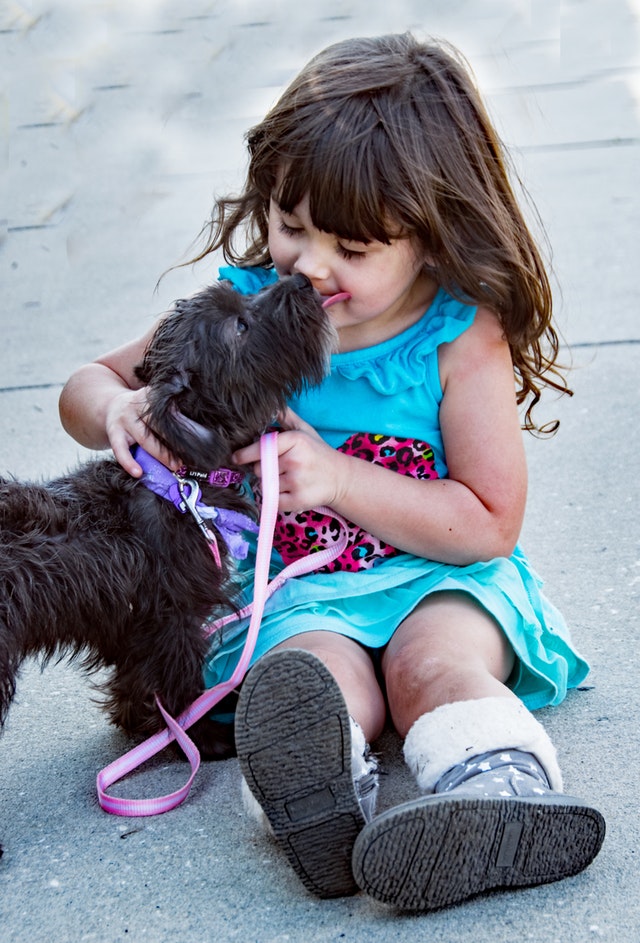
Living with a dog can be beneficial to children. Dogs can enhance children’s self-esteem, teach them responsibility and help them to learn empathy. However, children and dogs may not always automatically start off with a wonderful relationship. Parents must be willing to teach the dog and the child acceptable limits of behavior in order to make their interaction pleasant and safe. This is true with ALL breeds of dogs.
Please DON’T get a dog FOR your child. This is a family decision and a family dog. It may be your intention to have the dog belong to your child but your dog will bond first and closest to the person who feeds it, lets him outdoors, generally cares for him, and spends the most time with him. Young children especially are not capable of walking a dog of substantial size and strength. These days, school age kids’ schedules often call for the children to be away from home more than adults, so guess who he will bond with first?
Teaching your child to behave around ANY breed of dog … ANY size of dog is most important. Puppies are a little different and may be adaptable to more handling and kissing … but many of us get our dogs from rescues / shelters where they do not know the true background on the dog. Use these guidelines when you first get a dog:
In summary, it is the responsibility of the adult/parent adopting a dog to understand the dog’s needs and to teach these rules of behavior for interacting with a dog to their child. Most dogs are docile and will seldom bite without cause but you do not know the background of a shelter dog. Any dog will bite an adult/child as a last resort, as a reaction to stress and fear for their own safety. The guidelines described herein, should be followed by all adults, as well as by children. And remember……….
CHILDREN SHOULD NEVER BE LEFT ALONE WITH A DOG.
(EDITOR’S NOTE: This column first appeared shortly after the 9/11 tragedy in 2001. It has run every year since, with the author’s updates.)
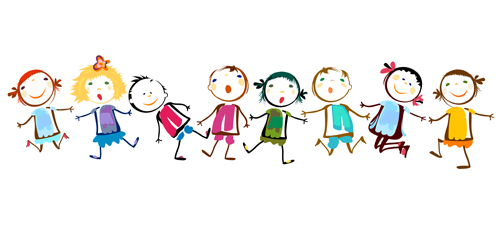
To All the Grandchilden in the World
By Wendell Abern
Dear Grandchildren Everywhere,
Today, I am writing to apologize to all of you.
Usually, I try to write humor. But eighteen years ago, terrorists killed thousands of Americans by flying airplanes into buildings. And this month, memorials and other reminders of that horrendous day make it impossible to write anything funny.
Insteady, today I want to apologize to everyone in your generation from everyone in mine.
As presumptuous as that sounds, consider: my generation inherited the scraps of one world war and struggled through another. Millions of people were killed.
We should have learned something from those two terrible wars. We should have made the world a better place for you.
We didn’t. And we didn’t. Just like all the generations that preceded us.
More than 150 years ago, a man by the name of Georg Wilhelm Friedrich Hegel said, “What we learn from history … is that we never learn from history.” True. Sadly, true.
No generation has ever learned, for example, the one thing that every human being has in common: none of us asked to be here. We had no say in the matter at all.
I believe that once given the gift of life, no one should have the right to take it away. I sometimes wonder how many concur with that, since human beings kill other human beings every day. Every hour. Every place on earth.
And in wars, we kill each other by the millions, almost always in the name of some –ism, -ology, or –ocracy.
One reason we keep warring is because of another reason no generation has ever learned: how to tell The Good Guys from The Bad Guys.
That is just as dumb as it sounds. But it keeps happening. And it happens because we want so badly to believe in our leaders: our presidents, our prime ministers, our priests, our rabbis – any of our leaders. We want them to be smart, to be fair, to be honest, and always to be right.
But we forget that our leaders are simply human beings, capable of making mistakes and being wrong.
And because we want so badly to believe what they tell us, we seemingly do anything they ask. Which includes killing other human beings. Our leaders realize they can manipulate us by using emotional keys, such as hatred and bloated patriotism. Ergo, wars.
Millions of Americans protested our country’s involvement in Viet Nam because we didn’t understand who hated us. Conversely, if President Carter had declared war on Iran after zealots kidnapped 52 Americans, we would have responded with fervent jingoism.
*
One thing the human race has learned – and sadly ignored – is that history is written by the winners. So how can we ever be sure The Good Guys won and The Bad Guys lost?
Many centuries ago, a man named Alexander led an army that conquered other countries, to make them chattels of the country of Greece. Some history books still refer to him as Alexander the Great. No one knows what he was called by the thousands of widows and orphans his marauding armies left in their wake.
If Germany had won World War II, the madman Adolph Hitler – arguably the most evil human being who ever lived – would be portrayed in today’s history books as a dynamic, charismatic leader.
*
Some 10,000 years ago, the human race discovered agriculture, creating the biggest sea change in our evolutionary history. We no longer had to hunt for food. We could grow our own. We settled down. We grew into little communities. We built villages. And towns.
And boundaries.
We have been at war ever since.
*
Personally, my strongest belief is that nothing is as sacred or as beautiful as a human life. Any human life.
I doubt many leaders would agree with that. At some point in the history of our civilization, our leaders determined that our beliefs were more important than our lives. That has never changed.
About 7,000 years ago, there were almost 27 million of us listening to a few leaders, telling us to go kill each other in the name of some –isms.
About 500 years ago, there were now 450 million of us, still listening to a few leaders, still telling us to go kill each other in the name of some new –isms.
Today, there are almost eight billion of us, still listening to a few leaders, still telling us to go kill each other in the name of the latest –isms.
When does it stop? When do we stop using our beliefs as license to kill each other?
Today, more than 70 years after the unspeakable atrocity known as The Holocaust … and after a weary world swore, “Never again”… and after a United Nations was created to bring peace to the whole planet … genocides continue to flourish. Ethnic cleansing occurs every decade or so. As I write this, the slaughter of innocent people continues. Globally.
Leaders of these slaughters invoke hatred, of course, as a motivator And why not? It has always worked.
Some have tried to unite people by other means. Mahatma Gandhi brought people together with love instead of hatred. So did Martin Luther King. So have a precious few others.
However, too many leaders have discovered that hatred works better.
And finally, here is a lesson we all should have learned in kindergarten: ours is the only planet that supports life. We should be taking care of Earth. And I admit that your generation is doing a much better job than mine. Or any previous generation, for that matter.
Today, we all face a disastrous calamity: climate change.
In June of this year (according to the National Oceanic and Atmospheric Association), our planet averaged temperatures almost two degrees warmer than the entire Twentieth Century average. According to one scientist, “Earth is running a fever, and it won’t break, thanks to climate change.”
Your generation has already shown its concern, all over the world. Yet many in my generation claim climate change has not really been proven; that it is “fake science.” I hope you can prove us to be ill-informed and short-sighted.
I hope you can start to change many of our entrenched patterns also.
Most of all, I hope you can start … to stop … mass killings. It will take many, many future generations to overcome cycles of hatreds generating hatreds; of killings spawning revenge; of broken alliances, shattered truces and unconscionable genocides.
I hope you can make the world a tiny bit better. And a little cleaner. And much safer.
I hope when you get to be my age, you never have to write a letter of apology to all the grandchildren in the world.
Sincerely,
Wendell Abern
Wendell can be reached at dendyabern@gmail.com